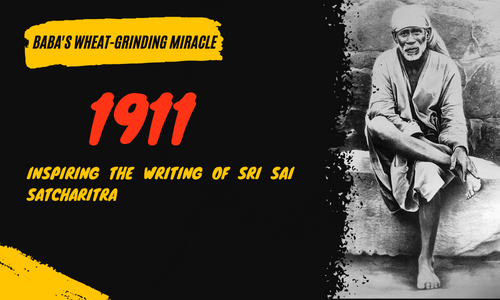In the early 20th century, a man named Hemadpant Dabholkar visited the small village of Shirdi in Maharashtra, India. While there, he heard stories of a saint named Sai Baba, who was said to have miraculous powers and had a large following in the village.
One particular story caught Hemadpant’s attention: the tale of how Baba ground wheat in his masjid (mosque) and distributed it to the villagers to spread every end of the village to help eradicate a cholera epidemic. According to the story, Baba had told the villagers that the wheat he ground would act as a preventative measure against the disease.
Inspired by Baba’s selflessness and his ability to help others, Hemadpant decided to write a book about Sai Baba’s life and teachings. He spent several years interviewing Baba’s followers and compiling their stories into a book called “Sri Sai Satcharitra,” which was published in 1929.
The book quickly became popular among Sai Baba’s followers and helped to spread his teachings to a wider audience. Today, “Sri Sai Satcharitra” is considered one of the most important texts in the Sai Baba tradition and is still widely read and revered by his followers around the world.
Baba’s act of grinding wheat to help the villagers of Shirdi during the cholera epidemic serves as an example of his compassion and willingness to help others, regardless of their caste, religion, or social status. It also highlights the importance of selflessness and service in the Sai Baba tradition.
